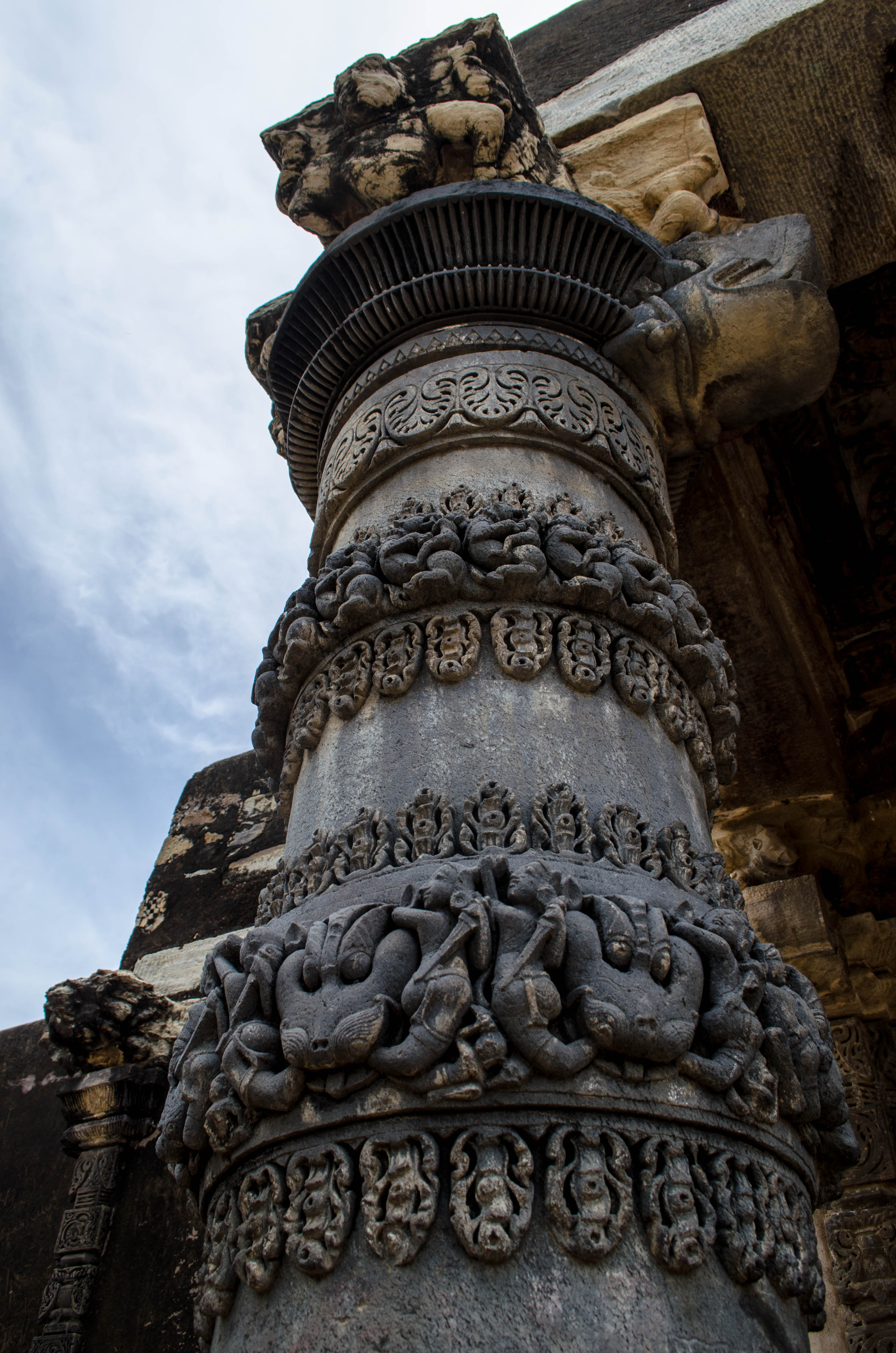Around 25-30 km away from the Sariska National Park is a Shiva temple complex, which dates back to the 7th- 10th century CE, and was built by Maharajadhiraja Mathanadeva, a Pratihara feudatory ruler. Known as the Neelkanth Mahadev Temple, the complex sits on a small isolated plateau top surrounded by ruinous walls of the Rajorgarh Fort. A steep rough track with some dramatic views on the way, takes one to this temple complex.
The complex comprises of one surviving temple (partly reconstructed by the ASI), and an extensive area covered with ruins of some 200-300 odd temples. The single standing temple is said to be the only one that survived the onslaught of Aurangzeb and his marauding army, who were forced to flee the spot after being attacked by hoards of angry bees.
The scattered ruined temple parts and the lone standing temple (Neelkanth temple) are a shining testimony of the high standards seen in early medieval Indian temple art and architecture. The surviving temple is of a trikuta style (three garbagrihas/sanctums), of which the central or main sanctum holds the linga. The mandapa ceiling of this temple has intricate concentric patterns that show lotus flowers in full bloom, along with other floral and geometric patterns. The pillars and capitals have beautiful carvings that depict kirtimukhas, apsaras, gandharvas, yalis, mithuna, saptmatrikas, and various other figures. The main deity here is that of Neelkanth or Shiva, with a lingam enshrined in the garbhagriha. The lalatabimba of the main shrine has Natesa, while the subsidiary sanctum lalatabimbas hold deities that are now too damaged to be identified. Inside the temple there is a common mandapa for the three sanctums, with four beautifully carved central pillars. There is a mukhmandapa in front, which also has two exquisitely carved pillars at the entrance. The main shikhara remains undamaged, and is of the nagara style; the side sanctums, however, stand bereft of their shikharas. The outer temple walls show pancharatha plan, has a pitha and a vedibandha that holds small niches with sculptures in them. The outer temple walls of the main sanctum hold beautiful sculptures in their bhadra niches that show Hari-Hara-Arka (a syncretic image of Shiva, Vishnu, and Surya), Narasimha, and Tripurantaka. The other external projections are filled with beautiful images of surasundaris, mithuna, yalis, and dikpalas. Among these, there is a beautiful standing image of a bejeweled Shiva and Gauri with nandi sitting at the back. Besides the main Neelkantha temple, the other ruined shrines seen in the site, as per the ASI, include Hanuman-ki-Deori, Bataka-ki-Deori, Bagh-ki-Deori, Kotan-ki-Deori, Lachholava-ki-Deori, and Dabar-ki-Deori.
A little distance away from the Neelkanth temple stands a tall statue of the Jain tirthankara Shantinatha, made of light orangish-red sandstone. An inscription now placed at the National Museum in Delhi says that a Jain temple was “dedicated to Shantinatha and built on the 13th day of the dark half of Baisakha in the year VS 979 (AD 922-23) during the reign of Gurjara-Pratihara ruler Mahipala I Deva of Kannauj, by the architect Sarvadeva of Simhapadra.“
This medieval site with the single standing temple and the extensively scattered temple ruins is a sight worth seeing, and a must visit place for those travelling to the Sariska National Park.


